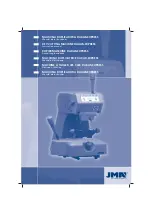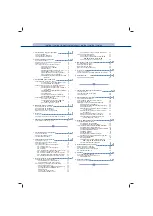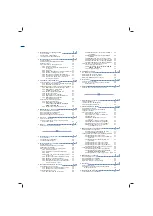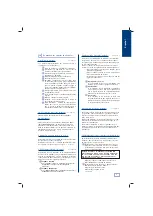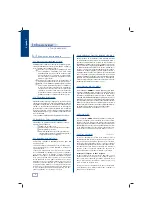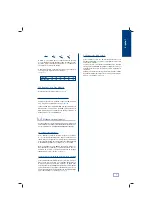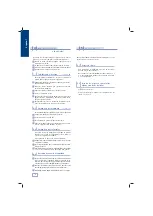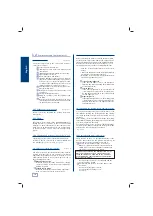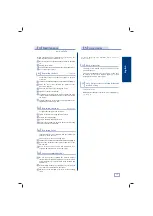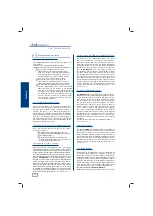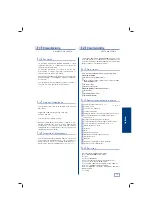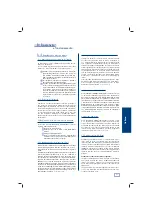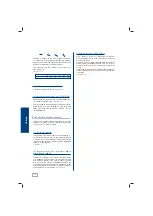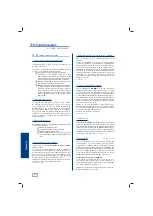
11
3.2.2 Cutting OP-WH.P and OP-WY.P keys
Fit the keys tightly into the clamps against the bar inser-
ted into the groove in the clamp. Use tool
no. 11
and
secure them at the same height using the adjustment
lights, removing the flexibility from the tracer point.
Then lower the tracer point by five points (turn the
tracer point adjuster to the right).
Note:
the five points
you lower the tracer point depends on the pressure
exerted by the operator. If you exert a lot of force the
five points will be increased. Insert the tracer point and
milling cutter into the groove. Lock the milling cutter
and the tracer point into the groove with the lever on
the right. Raise the tracer point a little, so as not to
drag the key. It is best to carry out a roughing pass first
followed by another finishing pass, following the whole
profile of the shape of the key. Machining is carried out
in a downward direction, from the tip of the key to the
head. Use the side spring. 1st speed.
See figure 11
3.2.3 ME-3.P and ME-4.P keys
Use the
AD-MM
adapter (see drawing), tracer point and milling
cutter
no. 11.
Position the adapter on the clamp. Position the
two keys and place them at the same height. Place the tip up
against the adapter and carry out the adjustment with the
lights. Insert into the groove. Remove the flexibility from the
tracer point and lock the milling cutter and tracer point in the
groove with the right-hand lever. Raise the tracer point a little
so that it does not drag the key. Make the first cut. Given that
the keys are reversible, only turn the blank. Release the clamps,
remove the key and put it back the other way around. Lock
the clamps and make the second cut.
Use the side spring. 1st speed.
See figure 12
3.2.4 JIS-4P key
Use the AD-MJ adapter (see drawing), tracer point and
milling cutter
no. 11.
Position the adapter on the clamp.
Position the two keys, placing them up against the rotating
plate. Adjust the cutting depth of the two keys, remove
the flexibility from the tracer point and make the first cut.
Turn the keys to the other side of the adapter, carry out the
previous key positioning process and finish with the second
cut.
See figure 13
3.2.5 Type FO-6P key (Ford)
Place the adapters on the clamp. Use tool
no. 22.
When
positioning the key, make sure that it is really flat, so that
the two cuts come out the same. Carry out adjustments
using the lights. Remove the flexibility from the tracer
point. Insert the tracer point into the groove of one letter,
lock the right with the right-hand lever and raise the tracer
point slightly so that it does not touch the adapter and make
the cut. 1st speed.
Reading the code of the original key:
The original key has 6 cutting positions. For a correct
reading to be made, you have to take the key in your
left hand, with the blade of the key to the right of the
black plastic head, as shown in Figure no. 14.
The 6 positions for cutting the key correspond to com-
binations of 4 different heights that are indicated and
numbered below:
3.1.1 Adjusting the cutting depth
Calibration should be carried out every time the tracer
point and milling cutter are changed.
To adjust the tracer point and milling cutter, proceed as
follows:
Insert the tracer point and the milling cutter into the
corresponding chucks, pushing them right in until
they will go no further. In order to carry out the mini
mum movements in the adjustment operation, tigh
ten the chuck so that the tracer point and milling cutter
are fixed into position.
Put two similar keys into the machine clamps to
make sure the tools are properly fixed into place.
Remove the flexibility from the tracer point (turn the
knob on the left). Rest the tracer point and the
milling cutter on the keys located in the clamps.
When you do this, the two red lights should come
on. If only one red light comes on, carry out adjust
ments with the part above the tracer point, until
both red lights come on.
3.1.2 Flexibility of the tracer point
The tracer point can be located underneath the
adjustment position, as this tool is equipped with a
flexible movement. If the tracer point is in this position,
during the cutting operation you gently insert the tracer
point into each hole (perforation) on the original key,
thereby facilitating the machining work of the milling
cutter on the blank, without any vibration or movement
taking place, and therefore ensuring a really precise
copy of the key.
The 2nd speed is used for hard metal tools.
3.2 Cutting keys with the standard clamp
To work safely when cutting keys, you must adhere to the
following rules:
Work with dry hands.
Make sure that the machine is earthed.
Use protection goggles.
The machine must be switched off and
the red motor
switch
off
when securing and releasing the keys.
3.2.1 Cutting SEA-1 keys
Put the milling cutter and tracer points into place,
F-1 / P-1
(side) and
F-3 / P-3
(blade grooves).
The side dimples
F-1 / P-1
are cut normally. But the grooves
F-3 / P-3
have to be cut as follows:
Place them at the same height using the adjustment lights,
removing the flexibility from the tracer point. Then
lower the tracer point by five points (turn the tracer
point adjuster to the right).
Note:
the five points you
lower the tracer point depend on the pressure exerted
by the operator, if you exert a lot of pressure the five
points will be increased. Insert into the groove. Lock the
milling cutter and the tracer point in the groove with the
lever on the right. Raise the tracer point a little so that it
does not drag the key. Enter by the middle of the groove
without touching the sides and enter from the right in
the second pass and exit from the left without exerting
any pressure, just resting the tracer point. 1st speed.
See
figure 10
1
2
3
Adjustment and fine tuning
3.1
How the
machine works
3
English

